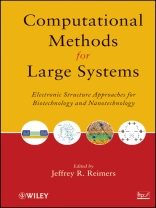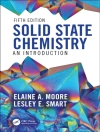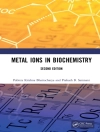While its results normally complement the information obtained by chemical experiments, computer computations can in some cases predict unobserved chemical phenomena Electronic-Structure Computational Methods for Large Systems gives readers a simple description of modern electronic-structure techniques. It shows what techniques are pertinent for particular problems in biotechnology and nanotechnology and provides a balanced treatment of topics that teach strengths and weaknesses, appropriate and inappropriate methods. It’s a book that will enhance the your calculating confidence and improve your ability to predict new effects and solve new problems.
İçerik tablosu
Preface.
Acknowledgments.
Dedication.
Part A. DFT: The Basic Workhourse.
1. Principles of density-functional theory: basic ideas for equilibrium and non-equilibrium applications (Ferdinand Evers).
2. SIESTA: A Linear-scaling method for density functional calculations (Julian D. Gale).
3. Large-Scale Plane-Wave-Based Density-Functional Theory: Formalism, Parallelization, and Applications (Eric Bylaska, Kiril Tsemekhman, Niranjan Govind, and Marat Valiev).
Part B: Higher Accuracy Methods.
4. Quantum Monte Carlo, or, how to solve the many-particle Schrödinger equation accurately whilst retaining favorable scaling with system size (Michael D. Towler).
5. Coupled Cluster Calculations for Large Molecular and Extended Systems (Karol Kowalski, Jeff R. Hammond, Wibe A. de Jong, Peng-Dong Fan, Marat Valiev, Dunyou Wang, Govind).
6. Strongly correlated electrons: renormalized band structure theory and quantum chemical methods (Liviu Hozoi and Peter Fulde).
Part C: More Economical Methods.
7. The energy-based fragmentation approach for computing total energies, structures, and molecular properties of large system at the ab initio levels (Wei Li, Weihie Hua, Tao Fang, and Shuhua Li).
8. MNDO-like Semiempirical Molecular Orbital Theory and its Application to Large Systems (Timothy Clark and James J. P. Stewart).
9. The Self-Consistent-Charge Density-Functional Tight-Binding (SCC-DFTB) method: An efficient approximation of Density Functional Theory (Marcus Elstner and Michael Gaus).
10. An introduction to effective low-energy Hamiltonians in condensed matter physics and chemistry (Ben J. Powell).
Part D. Advanced Applications.
11. SIESTA: Properties and Applications (Michael J. Ford).
12. Modeling Photobiology Using Quantum Mechanics (QM) and Quantum Mechanics/Molecular Mechanics (QM/MM) Calculations (Xin Li¯1, Lung Wa Chung and Keiji Morokuma).
13. Computational Methods for Modeling Free-Radical Polymerization (Michelle L. Coote and Ching Y. Lin).
14. Evaluation of Non-Linear Optical Properties of Large Conjugated Molecular Systems by Long-Range Corrected Density-Functional Theory (Hideo Dekino, Akihide Miyazaki, Jong-Won Song and Kimihiko Hirao).
15. Calculating the Raman and Hyper Raman Spectra of Large Molecules and Molecules Interacting with Nanoparticles (Nicholas Valley, Lasse Jensen, Jochen Autschbach and George C. Schatz).
16. Metal Surfaces and Interfaces: Properties from Density Functional Theory (Irene Yarovsky, Michelle J. S. Spencer and Ian K. Snook).
17. Surface Chemistry and Catalysis from Ab initio-based Multiscale Approaches (Catherine Stampfl and Simone Piccinin).
18. Molecular spintronics (Woo Youn Kim and Kwang S. Kim).
19. Calculating Molecular Conductance (Gemma C. Solomon and Mark A. Ratner)
Yazar hakkında
JEFFREY R. REIMERS, Ph D, is an Australian Research Council Professorial Research Fellow and works in the fields of molecular electronics and photosynthesis at The University of Sydney. Recently, he has been involved in the design and construction of single-molecule devices and has instituted a scanning-tunneling microscopy laboratory. Dr. Reimers has developed computational methods to solve problems involving strong electron-vibration coupling in biological photosynthesis, electron transport, and metal-organic chemistry.












